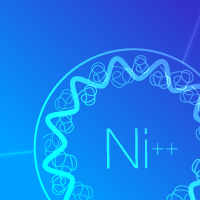Expressing and purifying sufficient amounts of recombinant proteins that are folded and assembled correctly and contain the posttranslational modifications needed for biological activity is a major challenge for biological analysis. One potential solution is to overexpress these molecules as secreted proteins in mammalian cells, which are more effective at producing active proteins with the correct folding and modifications than yeast or baculovirus systems (Dalton and Barton 2014). Secretion of expressed proteins into the cell-culture medium permits multiple harvests of protein from the culture supernatant as the cells continue growing, resulting in higher yields. In addition, purifying proteins from the culture medium instead of lysing the cells avoids exposure to proteases that can reduce yields of intact, active protein.
Conventional methods for purifying recombinant his-tagged proteins involve immobilized metal affinity chromatography (IMAC) columns and a lengthy procedure that can require desalting and buffer exchange before loading the column, as well as numerous column washes. By contrast, the Capturem His-Tagged Purification Maxiprep Kit uses maxi spin columns with a novel high-capacity membrane to eliminate many of these steps, making it possible to purify 2.5 mg of his-tagged protein in a simple, 15-minute benchtop procedure. Clarified media containing secreted protein can be loaded directly onto the Capturem membrane without the need for BSA removal, desalting, or buffer exchange. The small elution volumes used in the Capturem protocol result in protein that is highly concentrated, making buffer exchange unnecessary in most cases, since the protein can be diluted into the desired buffer.
Tech Note
Simplified purification of active, secreted his-tagged proteins
Capturem His-Tagged Purification Maxiprep Kit
Introduction
Results
Purification of active protein from culture supernatants
To demonstrate the Capturem his-tagged purification system, we coexpressed a secreted protein (6xhis-tagged Metridia luciferase) and a fluorescent transfection control (DsRed-Express2) in 293T cells using a bicistronic IRES vector, and measured the activity of the purified Metridia luciferase enzyme pre- and post-purification. We chose Metridia luciferase as our test protein because, unlike other luciferases which are retained in the cytosol, it is a secreted protein. As an additional benefit, like all luciferases, its activity is easy to measure with a standard luminometer. We also incorporated a bicistronic IRES vector into our experimental design, because this type of vector allows the simultaneous expression of two separate genes from the same RNA transcript, enabling us to confirm good expression of the 6xhis-tagged Metridia luciferase prior to sample purification, by visualizing the DsRed-Express2 reporter using fluorescence microscopy (Figure, Panel A).
At 48 hours after transfection, the cell-culture supernatant was centrifuged to remove all cell debris. A Capturem His-Tagged Purification Maxiprep Kit was then used to purify his-tagged Metridia luciferase from the clarified cell-culture supernatant, as described below. Luciferase activity was measured at several points during the purification process (Figure, Panel B), and shown to be effectively concentrated in the eluate, indicating that the purification conditions using this kit were not detrimental to luciferase activity.

High yield and activity of his-tagged Metridia luciferase purified using the Capturem His-Tagged Purification Maxiprep Kit. Panel A. Confirmation of Metridia luciferase expression in 293T cells. The pEF1a-Metluc-6xHis-IRES2-DsRed-Express2 expression vector, which coexpresses 6xhis-tagged Metridia luciferase with a red fluorescent reporter, was constructed using In-Fusion Cloning and the pEF1alpha-IRES-DsRed-Express2 Vector, and transfected into 293T cells using Xfect Transfection Reagent. The DsRed-Express2 reporter was then used to monitor transfection efficiency. Panel B. Yield and activity of Metridia luciferase, pre- and post-purification. Luciferase activity was measured at various steps in the purification of culture supernatant prepared from 293T cells expressing his-tagged Metridia luciferase.
Conclusions
The Capturem His-Tagged Purification Maxiprep Kit makes it possible to purify an active, secreted, 6xhis-tagged protein from a cell-culture supernatant at your bench in 15 minutes—without the need for BSA removal, desalting, or buffer exchange. While conventional methods require a lot of time and effort, Capturem His-Tagged Purification Kits mark the beginning of a protein purification revolution. By uniting speed, ease of use, and high capacity in one powerful system, protein work can move forward as never before.
Note: The secreted Metridia luciferase featured in this article is sold by Takara Bio as part of the Ready-To-Glow Secreted Luciferase Reporter System, which can be used to monitor cells at multiple time points in a live-cell assay.
Methods
Clarify 10 ml of cell culture supernatant (from a 10-cm dish) by centrifugation.


Equilibrate the column with 6 ml of xTractor Buffer.


Centrifuge the clarified sample through an equilibrated Capturem Maxiprep Nickel column.


Wash the column once with 6 ml of Wash Buffer.


Elute the secreted protein with 1 ml of Elution Buffer.

References
Dalton, A. C. & Barton, W. A. Over-expression of secreted proteins from mammalian cell lines. Protein Sci. 23, 517–525 (2014).
Visit the product page for the Capturem His-Tagged Purification Maxiprep Kit »
Related products
Takara Bio USA, Inc.
United States/Canada: +1.800.662.2566 • Asia Pacific: +1.650.919.7300 • Europe: +33.(0)1.3904.6880 • Japan: +81.(0)77.565.6999
FOR RESEARCH USE ONLY. NOT FOR USE IN DIAGNOSTIC PROCEDURES. © 2025 Takara Bio Inc. All Rights Reserved. All trademarks are the property of Takara Bio Inc. or its affiliate(s) in the U.S. and/or other countries or their respective owners. Certain trademarks may not be registered in all jurisdictions. Additional product, intellectual property, and restricted use information is available at takarabio.com.




